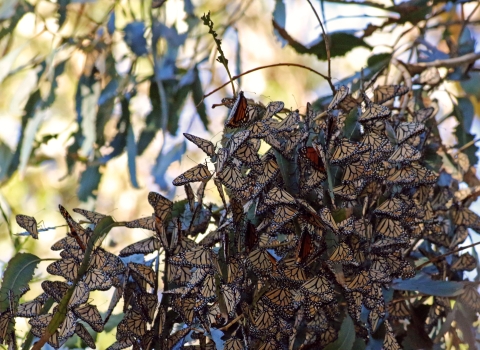Winter temperatures and precipitation were near normal across Maine and the Atlantic Canada Provinces this past year. The snow came and stayed in most areas and no major winter thaws occurred. As we started the survey, we were encouraged by wetland conditions across southern and coastal regions of Maine which continue to show marked improvement following years of abnormal dryness. We assessed conditions there to be excellent for waterfowl production. However, spring precipitation had been pretty limited across the Canadian Atlantic Provinces and by the time we got to New Brunswick, Prince Edward Island, and Nova Scotia, we observed low water levels in some wetlands. Still, conditions were generally thought to be good for production given an early spring thaw and warm, benign conditions for incubation and brood rearing. In Newfoundland and Labrador, the spring thaw came particularly early. In fact, in Labrador, conditions were about three weeks ahead of recent years and the lack of recent precipitation was evident in the low water levels of some wetlands. However, again, given the early spring and relative permanence of many wetlands in the bush, the outlook for production is good.
The challenge for our crew this year was the wind. While within safety margins, most flights were made in windy conditions leaving us a little fatigued at the end of each long survey day. In fact, it was not the normal low ceilings and rain/snow that grounded us at times this year, but wind. Our longest delays were in Newfoundland, where we waited for a week for winds to drop within the safety margins for low-level surveys. When we finally resumed the survey on the “Rock” we were rewarded by spectacular scenery and sights that few are privileged to witness, even residents. It’s truly a blessing to experience this beautiful and rugged country from low altitude with the deep landlocked fjords of the west coast and north peninsula, the rolling tundra, forests, and rocky ridges of the island center to the barren, rocky coast of eastern Newfoundland and its quintessential colorful fishing communities. Leaving Newfoundland for Labrador, we were pleased to find that winter had retreated more rapidly than in recent years and that survey timing was near perfect. Interior Labrador has its own unique, rugged, and unspoiled beauty with seemingly endless expanses of dark green fir and spruce overlaid on a bright gray-green mat of lichen, also known as “caribou moss,” covering the forest floor.
I was fortunate to survey with Reid Viegut. Reid is a graduate student at the University of Missouri finishing up his Master’s degree in wildlife biology. He is also a private pilot working toward commercial certification and interested in pursuing a dual-function biologist/pilot position as a career. This is Reid’s second year participating in the survey, having observed in Manitoba last year, so he has experienced the good, bad, and ugly of aerial wildlife surveys. He remains eager and passionate - a good sign that he has what it takes to manage both the job and life-style that comes with it. As enjoyable and re-invigorating as the survey is each year, I know we were also both happy to cross the New Brunswick/Maine border on the way home after a month away. I’m always quite grateful for the experiences and even more so for the safe return home of all the survey crews.




